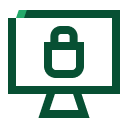
PAM – No-compromise privileged access security.
In our networked world, data is the most critical asset, but sensitive information can’t simply be locked away as it sometimes needs to be accessed. This is precisely where the balance between productivity and security becomes a critical point of tension.
Privileged Access Management (PAM) is the answer, protecting critical accesses from admin accounts and machines to software processes.
In our whitepaper, you’ll discover how PAM works, what models are out there and how you can find the best one for your business.
Privileged access requires robust security measures.
Privileged accounts are often referred to as “golden tickets” for cyber attackers, as they allow extensive access to networks, systems and data, making them prime targets.
- Granular rights management – Including for machine accounts
- Password vault with automated provisioning
- Monitoring and logging to support compliance
- Protection against ransomware and third-party misuse
- Implementation of zero-trust principles
* Mandatory field.
If you’d like to know more about how we handle your personal data, please read our Privacy Policy.
Identities in the crosshairs. Eye-opening figures that underscore the growing threat:
of all data leaks can be traced back to compromised access credentials or phishing.
access credentials were stolen by infostealer malware in 2024.
compromised access credentials were published on illegal platforms on the dark net. That’s a year-on-year increase of 42%.
Why businesses should act today.




Bechtle can help you find the perfect PAM strategy for you.
PAM isn’t an off-the-peg solution. It covers a range of use cases—from internal administration and remote access to software communication and endpoint protection. Our whitepaper presents four detailed PAM scenarios:



